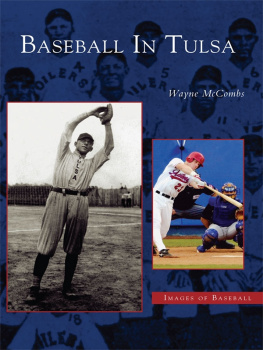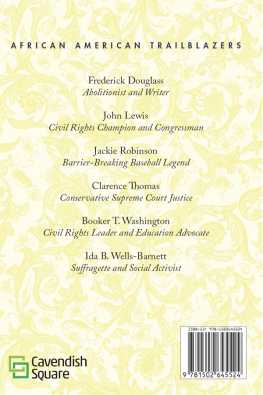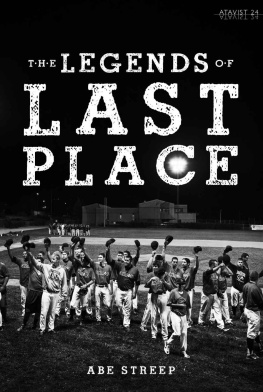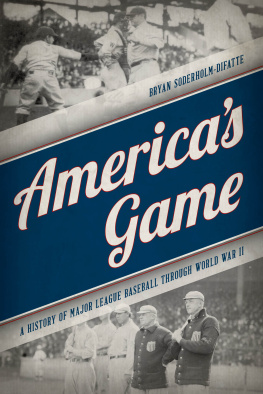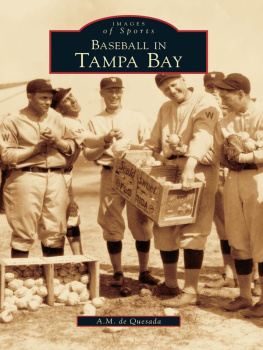INTRODUCTION
W hen the first Prospect Handbook was published in 2001, it seemed like an audacious idea. Under founder Allan Simpsons leadership, Baseball America had popularized organization Top 10 Prospects lists in the magazine, but the effort required to turn a Top 10 into a Top 30 for all 30 organizations required a massive amount of additional work.
But it was done. And what we found is that the reporting required to do a Top 30 not only gave fans a chance to read up on more of their teams future big leaguers, but it also improved out Top 10s. Every year since then, we have figured out ways to do this book a little better. The amount of information we gathered to produce the 2018 Prospect Handbook would have been beyond our imagination when we produced the first book in 2001.
Now we update our Top 100 and Top 10s at midseason. That idea seemed nearly impossible a decade ago, but now its just a normal part of the Baseball America workflow.
We hope that the updates and tweaks weve made to this years edition will make this the best Prospect Handbook youve ever purchased. Next year will surely bring some additional tweaks.
The Prospect Handbook is the biggest project the Baseball America staff undertakes each year. Were proud of that, and we want to make sure that its well worth your purchase. We hope you enjoy it as much as we enjoyed spending the past year watching players, talking to scouts and writing up these 900-plus reports.
J.J. COOPER AND MATT EDDY
EXECUTIVE EDITORS, BASEBALL AMERICA
A NOTE ABOUT THIS EDITION
Baseball America introduced BA Grades in the 2012 edition of the Prospect Handbook. Now for the first time, we grade all tools for the 300 players who rank as Top 10 Prospects, providing an quick overview of each players strengths and weaknesses. All grades are projected future grades.
We grade players tools on the 20-80 scouting scale, where 50 is average. A key to the abbreviations:
Players | Pitchers* |
HIT | Ability to hit for average | FB | Fastball |
POW | Power | CB | Curveball |
SPD | Speed | SL | Slider |
FLD | Fielding ability | CHG | Changeup |
ARM | Throwing arm | CTL | Control |
Some pitchers receive a grade for OTH or Other, which is typically a cutter or splitter. In the case of Rays righthander Brent Honeywell its a screwball.
ALSO NEW IN THE 2018 EDITION:
POSITION RANKINGS: Beginning on , we rank prospects at all eight field positions plus righthanded and lefthanded starting pitcher, all to at least 10 places. We know many fantasy and simulation league players make use of the Prospect Handbook to gain an edge, so we enhanced the books utility by grading prospects at each position. The Position Rankings supplant the personal Top 50 Prospects from previous editions.
PROJECTED 2021 LINEUPS: Our crystal ball now includes players season ages in 2021. Find out if your team is building a dynasty.
MORE SPACE FOR REPORTS: We budgeted an additional page for each chapter to give you more of what you value most: scouting reports. We also improved the readability of our reports by breaking them into the three familiar segments that appear in the magazine: Track Record, Scouting Report and The Future.
EDITORS NOTE: The transactions deadline for this book was Dec. 14, 2017. You can find players who changed organizations by using the handy index in the back. >> For the purposes of this book, a prospect is any player who has not exceeded 50 innings, 30 relief appearances or 130 at-bats in the major leagues, regardless of major league service time. Finally, the grades attached to each teams draft class, as evaluated by Teddy Cahill, are based solely on the quality of the players signed, with no consideration given to any players acquired by trading those draft picks or for how many draft picks a team might have lost.
BA GRADES
F or the seventh year in a row, Baseball America has assigned Grades and Risk Factors for each of the 900 prospects in the Prospect Handbook. For the BA Grade, we used a 20-to-80 scale, similar to the scale scouts use, to keep it familiar. However, most major league clubs put an overall numerical grade on players, called the Overall Future Potential or OFP. Often the OFP is merely an average of the players tools.
BA GRADE
Risk: High
The BA Grade is not an OFP. Its a measure of a prospects value, and it attempts to gauge the players realistic ceiling. Weve continued to adjust our grades to try to be more realistic, and less optimistic, and keep refining the grade vetting process. The majority of the players in this book rest in the 50 High/45 Medium range, because the vast majority of worthwhile prospects in the minors are players who either have a chance to be everyday regulars but are far from that possibility, or players who are closer to the majors but who are likely to be role players and useful contributors. Few future franchise players or perennial all-stars graduate from the minors in any given year. The goal of the Grade/Risk system is to allow readers to take a quick look at how strong their teams farm system is, and how much immediate help the big league club can expect from its prospect. Got a minor leaguer who was traded from one organization to the other after the book went to press? Use the players Grade/Risk and see where he would rank in his new system.
It also helps with our Organization Rankings, but those will not simply flow, in formulaic fashion, from the Grade/Risk results as we incorporate a lot of factors into our talent rankings including the differences in risk between pitchers and hitters. Hitters have a lower injury risk and therefore are safer bets
BA Grade Scale
GRADE | HITTER ROLE | PITCHER ROLE | EXAMPLES |
75-80 | Franchise Player | No. 1 starter | Mike Trout, Kris Byrant, Clayton Kershaw |
65-70 | Perennial All-Star | No. 2 starter | Freddie Freeman, Mookie Betts, Zack Greinke |
| Occasional All-Star | No. 3 starter, Games best reliever | Charlie Blackmon, Marcell Ozuna, Kenley Jansen |
| First Division Regular | No. 3/No. 4 starter, Elite closer | Jean Segura, Lance Lynn, Zach Britton |
| Solid Average Regular | No. 4 starter, Elite set-up reliever | Mike Leake, Mitch Moreland, Bryan Shaw |
| Second-Division Regular/Platoon | No. 5 starter, Lower-leverage reliever | Steve Pearce, Cory Spangenberg, Ricky Nolasco |
| Reserve | Fill-in starter, relief specialist | Andrew Romine, Craig Breslow, Chris Smith |
RISK FACTORS
LOW: Likely to reach realistic ceiling, certain big league career barring injury.
MEDIUM: Some work left to refine their tools, but a polished player.
HIGH: Most top draft picks in their first seasons, players with plenty of projection left, players with a significant flaw left to correct or players whose injury history is worrisome.
VERY HIGH: Recent draft picks with a limited track record of success or injury issues.
EXTREME: Teenagers in Rookie ball, players with significant injury histories or players whose struggle with a key skill (especially control for pitchers or strikeout rate for hitters).


